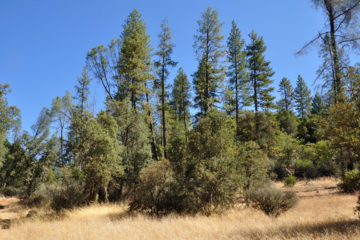The cows, bluebirds, wood ducks, American kestrels, and California Black Rails at Doty Ravine Preserve will have some new buzzing buddies in the grasslands: Honey bees. You may have heard about the plight of the honey bee. Overwork, fungicide, pesticide, single-crop pollination and lack of foraging land are taking a toll on the little pollinators, and beekeepers sometimes lose up to 90 percent of their bees in a growing season. As a result, there are fewer than half the bee hives in the U.S. than there were 70 years ago, according to California State Beekeepers Association President, John Miller. If beekeepers can’t continue to make a living, the bees will go away, and so will our food supply. Placer Land Trust (PLT) hopes to help out the hard-working insects, as well as farmers and foodies, by offering bees more land and the variety of grasses and flowers they need to survive.
Miller, a local apiarist who is also on the board of Project Apis m— a non-profit that promotes the health of bees– facilitated a cooperative project between PLT and Kimiora Ward, a restoration ecology researcher at Neal Williams Lab at UC Davis that will help restore PLT land and improve the lives of bees, which will improve crop production, which in the end means more food for humans. “This effort benefits everyone,” said PLT Land Manager, Justin Wages. “And the flowers look pretty.”
Through a grant from Project Apis m, Ward and Wages planted a mix of native, non-invasive grasses and flowers such as poppies, Meadowfoam, Lupine, and Lacy Phacelia in a one-acre area of the 427-acre Doty Ravine Preserve near Lincoln. PLT has been restoring the land, which was damaged by fire in 2008, with insurance funds as well as a matching grant from Fish and Wildlife Service and National Resource Conservation Services, but Ward will study this new seed mix to learn which flowers and grasses are the most durable, inexpensive, easy to plant, and will provide the most nutrients for bees.
Ward will also install an experimental bee hive on the preserve and monitor the bees regularly to see how healthy they are, what kind of pollen they collect, and whether or not they’re having a positive impact on nearby crops. The long-term hope is that this research will encourage the U.S. Department of Agriculture to provide more funding to promote the growth of wildflowers, which will benefit more bees.
The other hope is that this relationship will create a model for PLT and beekeepers in the future. PLT already hosts several of Miller’s bee yards on its preserves, but it wasn’t until attending the California Farm Bureau Federation’s emergency conference about the fate of the honey bee, and learning about the vast amount of foraging land bees need to survive, that Wages realized a cooperative relationship between beekeepers and land trusts is the perfect fit for one piece of the puzzle. “PLT can provide more places for bee yards, and in return beekeepers might provide seeds needed for land restoration,” Wages said.
With the information from Ward’s study, PLT can restore its preserves with a seed mix that’s ideal for bees and other native pollinators. As an added side benefit to this cooperative effort, beekeepers will learn about the importance of planting native, non-invasive flowers and grasses which support native insects and require less fertilizer and pesticides. Also, some critters living on PLT preserves will have a tasty, new snack. “We’ll protect against bears getting into the hives if that’s a problem,” Wages said, “but bee-eating is kind of an accepted fate.”
The plan is that PLT will hike the learning curve of these new apiarist relationships with the help of the California Council of Land Trusts which will create educational materials as well as contract templates for land trusts to use with beekeepers. Together PLT and CCLT will educate other land trusts about how it’s done. “Land trusts are the perfect organizations for this cooperative venture because we’re not bureaucratic, we can get it done quickly, and since it benefits the public we don’t have to charge fees to the beekeepers,” Wages said. “We’re the low hanging fruit.”
Nature lovers who are apiphobic (afraid of bees) should find some peace of mind in knowing that hives will be placed away from high-traffic areas, according to Wages, and PLT will coordinate with apiarists so that the bees won’t be worked – and aggravated— before community events. “Bees are mellow and easy-going creatures,” Wages said, “as long as they’re left alone to do their thing.”
It costs PLT upwards of $1,000 to seed an acre of land. If you’d like to support your local bees, donations are always welcome.


